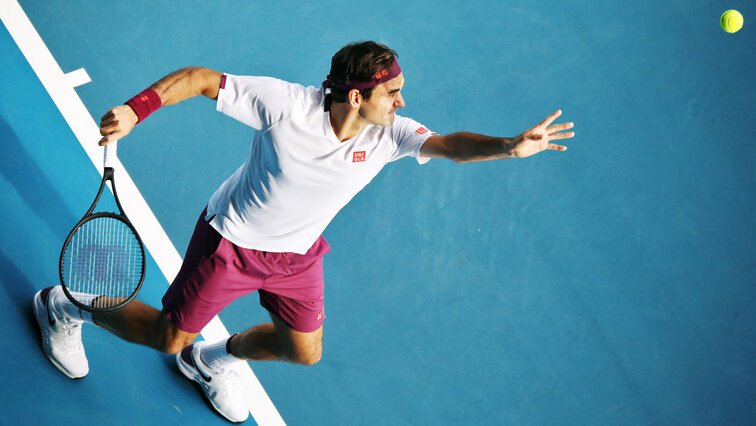Three creative ideas to make your service game more successful
From Monday, tennis can be played nationwide again in Germany and Austria. Tennis insider Marco Kühn prepares Wuch with his tips for the first matches.
by Marco Kühn
last edit:
May 08, 2020, 11:24 am

Boris Becker said that the second serve is the soul of every tennis player.
How is it in your soul Colorful and creative or rather dark and monotonous? If the pendulum strikes more in the second direction - stay tuned. We're going to look at three ideas on how you can make more of your serve games victorious. We will not fiddle with your technique, but stretch your head a bit so that you can find better solutions on the court. The serve is the only one in tennis that you play without the influence of your opponent. Accordingly, your responsibility is great and you should be fit accordingly.
Let’s take a look at your opponent’s thoughts before we specifically address our three ideas. You shouldn't forget that your opponent also has to deal with tension, insecurity and nervousness. We keep this fact in mind as we will start again at this point.
We start with a first idea that you can take with you for the first serve.
# 1 The variation makes your serve strong
Those who serve hard don't serve well. You may also have had the experience that your opponents with a true bullet from a first serve hardly have any problems with the return. Of course, the feeling is great when you hit the felt ball in the middle and almost a trail of fire follows your serve. But your opponent only has to take back the racket briefly, block your projectile and zack - the return lands directly at your feet.
It's not a swan song on a hard first serve through the middle. However, it is the variation that makes your service games more complicated for your opponent. If they don't know how to go about their next serve, they're busy in their heads.
Here's how to find variations in your treasure chest and offer something new with every serve:
- with slice through the middle
- with a kick on the backhand
- Slice outwards
These are just a few examples. Just have a look at how Roger Federer mixes his serves. With the right look, you will quickly find that he always gives his opponent fresh tasks for the return.
# 2 The secret of the 10 km / surcharge
You are welcome to break the 10 km / h limit. Don't be tempted to take too much risk on your second serve. It can be more difficult for your opponent to attack an alleged 'throw-in'. You know that it is always complex to play a slow ball quickly than to make a fast ball even faster.
In certain game situations, a slow slice serve can be an optimal solution. Ideally, you can also play it in the middle. So you step off the risk pedal and your opponent has to move sideways before playing the return. This sideways movement is unusual for many players.
If you are preparing for an important second serve, avoid hectic thoughts. The more hectic you think, the more hectic you serve. Your thoughts rub off immediately on your solutions in the match.
# 3 Orient your serve based on your opponent's emotion
We talked about your opponent's thoughts and feelings earlier in this article. Many players underestimate and forget that these feelings naturally influence your opponent's decisions.
If you feel that your opponent is at "180" and can hardly believe it, why should you take full risk on the first serve? You would give your opponent more time by winning the net to win the version again. To do this, it builds up your opponent if you fail. This can also be a first serve played on the net.
From a psychological-tactical point of view, a somewhat restricted service makes more sense in such a situation. You can also use your body language to put pressure on an opponent who would already like to bite the bat. Quickly stand up for the next serve. Keep eye contact. Fire yourself up again. Such gestures can give you the necessary looseness for your serve and at the same time keep your opponent busy in the head.
And as you know, looseness is always an excellent ingredient for your serve.
